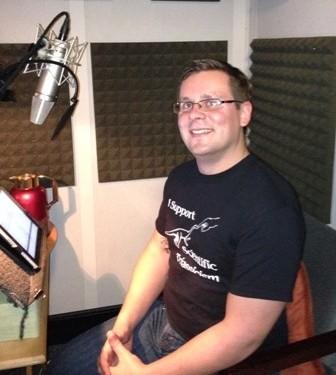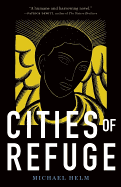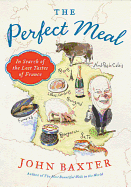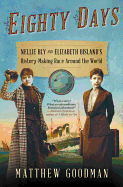 On a sunny afternoon in February, Brian Switek sits in a closet-sized room in midtown Manhattan, reading aloud from his forthcoming book, My Beloved Brontosaurus (co-published by Scientific American and Farrar, Straus & Giroux in April). It's the second day of recording, and he's just getting to the bit where he discusses theories about what killed off the dinosaurs. In the adjacent room, watching Switek through a window, audiobook producer Bob Van Kolken monitors his progress, as engineer Iris McElroy occasionally asks him to repeat a line more slowly.
On a sunny afternoon in February, Brian Switek sits in a closet-sized room in midtown Manhattan, reading aloud from his forthcoming book, My Beloved Brontosaurus (co-published by Scientific American and Farrar, Straus & Giroux in April). It's the second day of recording, and he's just getting to the bit where he discusses theories about what killed off the dinosaurs. In the adjacent room, watching Switek through a window, audiobook producer Bob Van Kolken monitors his progress, as engineer Iris McElroy occasionally asks him to repeat a line more slowly.
"Brian's doing great for a first time reader," Van Kolken said, and McElroy concurred, noting that Switek's background as a science journalist specializing in dinosaur studies makes him an ideal reader for the book. "If we were using an actor," she noted, "we'd probably be spending another two days looking up pronunciations of all these names."
During a break in the proceedings, Switek steps out into the production room. He admitted that he didn't think he was going to be asked to do his own audiobook, and he's happily surprised by the opportunity. "But if it wasn't me," he joked, "I'd want it to be Samuel L. Jackson."
 Another facet of My Beloved Brontosaurus that virtually requires Switek in the recording booth is its highly personal perspective--dinosaurs have been a lifelong passion for him. "My mother tells me that I loved trucks and elephants before moving on to dinosaurs," he recalled in an e-mail shortly after the recording session, "but the dinosaur phase kicked in relatively early.... I already adored dinosaurs during my first visit to the American Museum of Natural History, when I was about five years old, but that day trip amplified their prehistoric inspiration. I've been chasing them ever since, in one way or another."
Another facet of My Beloved Brontosaurus that virtually requires Switek in the recording booth is its highly personal perspective--dinosaurs have been a lifelong passion for him. "My mother tells me that I loved trucks and elephants before moving on to dinosaurs," he recalled in an e-mail shortly after the recording session, "but the dinosaur phase kicked in relatively early.... I already adored dinosaurs during my first visit to the American Museum of Natural History, when I was about five years old, but that day trip amplified their prehistoric inspiration. I've been chasing them ever since, in one way or another."
That pursuit has led to a career as a freelance science writer and blogger for National Geographic, focused on paleontology and natural history. He spent about a year working on My Beloved Brontosaurus, with a good portion of the summer devoted to field research, including a two-week visit to fossil sites and museums in Utah, Montana and Wyoming. He's especially fond of Dinosaur National Monument; his first trips there were a contributing factor to his decision to live in the West. "It's a stunning park," Switek said. "There's the famous quarry wall, studded with bones of Jurassic dinosaurs, but the national park also contains vast exposures of other time periods, covering over 300 million years of history! You can stand in some spots and look back in time, watching ancient seas come in and out, only to be replaced by a succession of sandy deserts, floodplains and swamps."
This isn't just ancient history for Switek. He takes particular relish in discussing the recent scientific proposition that birds aren't just descended from the dinosaurs--they're dinosaurs that have survived into the present era. "Many of the features we associate with birds evolved among non-avian dinosaurs first," he explained, citing protofeathers and fuzz-like body coverings as examples that can also teach us about early dinosaur biology. "But it's still hard to think of a pigeon, penguin or hummingbird as a dinosaur," he conceded. "A chickadee is not an Apatosaurus. Still, when you get down into bone and other tissues, such disparate creatures share a lot in common. And it's pretty wonderful to realize that dinosaurs truly did escape extinction and are thriving among us today."
Back in the studio, I commented on the pillow that Switek was clutching around his midsection while he was sitting in the recording booth. "We started doing that the first day," he said, explaining that he was so eager to start recording that he skipped breakfast that morning. Eventually, his stomach grumbling got so loud it was being picked up on the microphone. And though he remembered to eat breakfast this morning, he said, he found the setup so comfortable he kept on doing it. "Plus, it keeps my arms occupied," he said, smiling. --Ron Hogan, founder of Beatrice.com
Brian Switek: His Beloved Dinosaurs
 Dorcas Lane, postmistress of Candleford, reigns supreme over her small domain in rural 1890s Oxfordshire. In Candleford Green, the third volume in Flora Thompson's trilogy of autobiographical novels, Lark Rise to Candleford. Laura Timmins comes from the neighboring hamlet of Lark Rise to work for Dorcas and becomes Dorcas's co-conspirator and fellow keeper of secrets. Kind and honorable (if mischievous), they sometimes meddle in their neighbors' lives, with amusing (if occasionally disastrous) results.
Dorcas Lane, postmistress of Candleford, reigns supreme over her small domain in rural 1890s Oxfordshire. In Candleford Green, the third volume in Flora Thompson's trilogy of autobiographical novels, Lark Rise to Candleford. Laura Timmins comes from the neighboring hamlet of Lark Rise to work for Dorcas and becomes Dorcas's co-conspirator and fellow keeper of secrets. Kind and honorable (if mischievous), they sometimes meddle in their neighbors' lives, with amusing (if occasionally disastrous) results.


 On a sunny afternoon in February, Brian Switek sits in a closet-sized room in midtown Manhattan, reading aloud from his forthcoming book, My Beloved Brontosaurus (co-published by Scientific American and Farrar, Straus & Giroux in April). It's the second day of recording, and he's just getting to the bit where he discusses theories about what killed off the dinosaurs. In the adjacent room, watching Switek through a window, audiobook producer Bob Van Kolken monitors his progress, as engineer Iris McElroy occasionally asks him to repeat a line more slowly.
On a sunny afternoon in February, Brian Switek sits in a closet-sized room in midtown Manhattan, reading aloud from his forthcoming book, My Beloved Brontosaurus (co-published by Scientific American and Farrar, Straus & Giroux in April). It's the second day of recording, and he's just getting to the bit where he discusses theories about what killed off the dinosaurs. In the adjacent room, watching Switek through a window, audiobook producer Bob Van Kolken monitors his progress, as engineer Iris McElroy occasionally asks him to repeat a line more slowly. Another facet of My Beloved Brontosaurus that virtually requires Switek in the recording booth is its highly personal perspective--dinosaurs have been a lifelong passion for him. "My mother tells me that I loved trucks and elephants before moving on to dinosaurs," he recalled in an e-mail shortly after the recording session, "but the dinosaur phase kicked in relatively early.... I already adored dinosaurs during my first visit to the American Museum of Natural History, when I was about five years old, but that day trip amplified their prehistoric inspiration. I've been chasing them ever since, in one way or another."
Another facet of My Beloved Brontosaurus that virtually requires Switek in the recording booth is its highly personal perspective--dinosaurs have been a lifelong passion for him. "My mother tells me that I loved trucks and elephants before moving on to dinosaurs," he recalled in an e-mail shortly after the recording session, "but the dinosaur phase kicked in relatively early.... I already adored dinosaurs during my first visit to the American Museum of Natural History, when I was about five years old, but that day trip amplified their prehistoric inspiration. I've been chasing them ever since, in one way or another."










